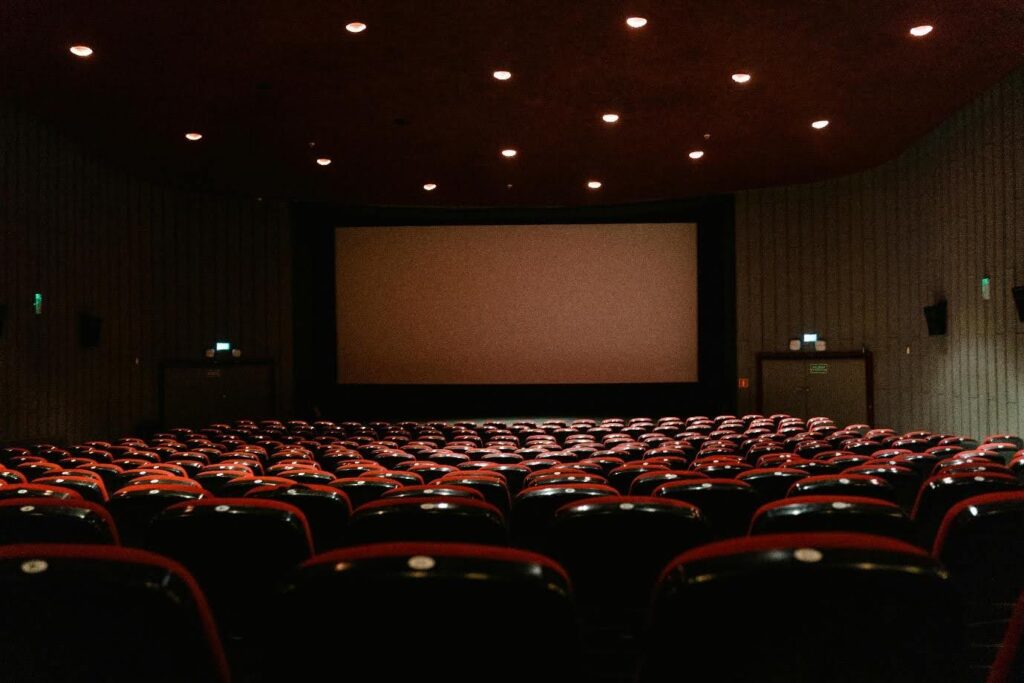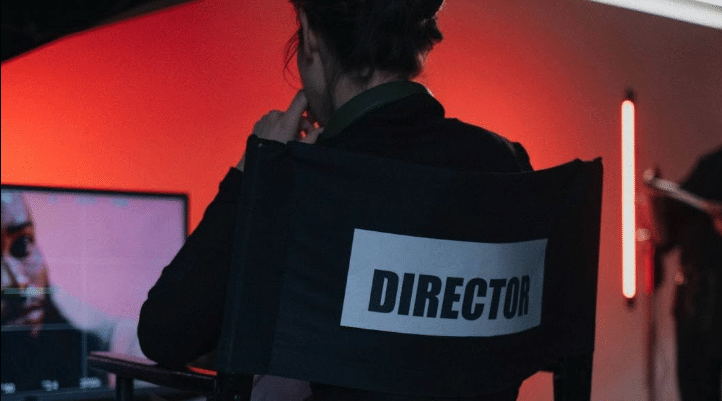
Filmmaking is a team effort. No matter how small or large the project, they’ll always be a dedicated crew who have poured their heart and souls into their roles, both in front of and behind the camera. From the writer, director and producer to visual effects and the catering provider, everyone contributes something valuable to the final product. That’s why they should all receive the proper recognition – with a film credit!
If you’re working on your next project, you should know exactly how film credits work. If you don’t, congratulations, you’ve come to the right place!
In today’s blog, we’ll explore the difference between opening and closing credits, their hierarchy, and how to write film credits. Keep reading, and you’ll also discover how film scores can add extra pizzaz to a movie’s closing moments.
It also wouldn’t be a Celtx blog if we didn’t throw in some free resources for you to streamline your credit sequences, so keep a look out for those!
So, without further ado, let’s roll the credits…

Table of Contents
- The Difference Between Opening & Closing Credits
- Who Gets Credited? Understanding Hierarchy & Order
- How to Format Film Credits Correctly
- Famous Film Scores & Their Impact on Credits
- Credits in Short Films vs. Feature Films
- Free and Premium Film Credit Templates & Resources
- Conclusion
The Difference Between Opening & Closing Credits
Film credits are typically divided into two parts: opening and closing credits.
Both are there to acknowledge key contributors, however each serve a slightly different purpose.
Let’s break it down:
Opening Credits
Just as the title suggests, the opening credits appear at the start of a film, usually highlighting the most significant contributors.
The opening credits are crucial for setting the tone of the movie, often accompanied by a compelling visual sequence or score.
So, who’s included in the opening credits? Here are the common elements:
- Production company name(s)
- Film title
- Lead actors
- Director
- Producers
- Screenwriter(s)
- Composer
- Cinematographer
One of the most famous opening credit sequences is the James Bond franchise. Part of the anticipation for the next Bond installment is due to the opening titles and how the theme and aesthetic will change or improve from the last one.
Bond theme songs are also a huge part of this (but more on music later). For now, check out the opening titles from the latest Bond movie, No Time to Die.
It’s a great example of how you can really get creative and start your movie with a bang!
Closing Credits
These appear at the end of the film, providing a comprehensive list of everyone involved in the production.
Unlike the opening credits, these are more detailed and include additional crew members. Just like:
- Supporting actors
- Stunt performers
- Art department
- Costume designers
- Visual effects artists
- Editors
- Sound and music teams
- Production assistants
- Special thanks
You’ll find closing credits will smoothly transition in from the final scene, shown as individual slides before morphing into a traditional scroll.
For huge studios like Marvel, the closing credits are the perfect place to tease upcoming projects. Many of us hang on in the movie theater to watch the credits scroll by, waiting patiently to find out what’s coming next. This example from Black Panther (2018) shows this off perfectly.
Roll credits on confusion—get organized from script to screen with
Celtx script writing software.
Who Gets Credited? Understanding Hierarchy & Order
Both the opening and closing credits will follow a standard hierarchy, usually informed by professional unions and guilds who will require a specific billing order.
So, what order do film credits go in? Let’s find out:
Opening Credits Hierarchy
1. Distributor
This is the production company who acquires and releases the movie. Their role also includes marketing and advertising.
2. Production Company
They oversee the entire production, hire talent, organize the budget, and keep everything running smoothly.
3. Lead Acting Talent
This is usually the top billed actor or actress who leads the cast (the protagonist of the story). After their name is shown, the rest of the leading cast will be credited.
4. Casting Director
The person responsible for casting all the aforementioned talent!
5. Film Score Composer
The person responsible for all the music you’ll hear throughout the movie.
6. Costume Designer
The visionary behind the costumes the characters wear.

7. Associate Producers
A supportive role to the main decision makers, focusing on the practical side of a film’s production.
8. Editors
The post-production creatives who edit the movie once shooting ends.
9. Production Designer
The person responsible for the set design and physical aesthetic of the movie.
10. Cinematographer (Director of Photography)
The person responsible for the visual look of the movie, focusing on camera angles, blocking, and much more. For a deep dive into the role of the cinematographer, click here.

11. Executive Producer
The producer in charge and who’s responsible for the entire production process, ensuring both business and artistic goals align from securing funding to distribution.
12. Producer(s)
The key figures responsible for overseeing the production. There can be many different types of producers. Check out our dedicated blog to find out more about them.
13. Writers
The writer or writers who developed and wrote the script. If there are multiple writers mentioned together, the project was probably co-written. Conversely, if there are multiple writers mentioned one after the other, the first writer was the one who wrote the original draft, with the others contributing rewrites and ideas.
14. Director
The lead visionary that drives the film – essentially, they are everyone’s boss.
While opening credits are still used in classic movies such as James Bond, they have become less popular in recent times, with filmmakers preferring to hit the ground running and thrust their audiences straight into the action.
Opening credits will usually follow a pattern like this but can vary depending on an actor’s contract or whether a director wants to go down a different route.
Here is a list some of the best opening credit sequences of all time, compiled by Cinefix.
Closing Credits Hierarchy
You’ll find that most movies will order their closing credits in the same way. “Above the line” crew will always be credited first with a title card each, even if they’ve already appeared in the opening credits (if there were any).
Here’s a typical running order for the closing credits:
Above the Line Roles
These will all have their own individual title card.
- Director
- Writer(s)
- Producer
- Executive producer(s)
- Cinematographer (DOP)
- Production Designer
- Editor
- Music composer
- Costume designer
- Visual Effects supervisor
- Associate producers
- Casting director
- Lead cast
For the middle section (editor to associate producer) these roles are interchangeable depending on the movie and the director’s decision in terms of credit order.
For example, in these end credits from Harry Potter and the Deathly Hallows (Part 2), these roles are in a slightly different order.
Remaining Credits
Here, we transition from individual title cards to the traditional scrolling credits.
- Unit production manager(s)
- First assistant director
- Second assistant director
- Full cast (including lead and supporting)
- Production crew (split into the various departments from electrical and sound to set and costumes)
- Post-production crew (split into the various departments including editing, color, sound, and effects)
- Stunt performers, directors and choreographers
- Credits for any additional production units (crews that shot additional footage)
- Catering services
- Title design
- Songs that the production have licenced including contributing artists, composers and publishers.
- Sound design
- Special thanks
- Locations
- Logos for any external supporting organisations such as guilds, unions, rentals, equipment sponsors and local film boards/government agencies.
- Copyright
- Final disclaimers to the audience (could include a disclaimer that the film is a work of fiction)
Again, this order can be interchangeable depending on the movie’s genre (especially if it has many special effects) and director’s preference.

From lead roles to key grips, film is a team effort—
Celtx helps you manage it all in one place.
Start writing with Celtx for free.
How to Format Film Credits Correctly
If you’re shouting out everyone who made your film, it’s important that the credits are formatted correctly. They must be clear, professional and industry compliant. Even if you’re making an independent film, best practice is the way to go!
So how exactly should you be formatting your credits?
Font and Size
This may sound basic, but your audience needs to be able to read the credits. Choose a legible font and maintain consistent sizing for a smooth transition between credits.
Alignment
Most credits are aligned in the center of the screen, though you can opt for left-aligned or staggered formatting. Again, just make sure it’s consistent.
Scrolling vs. Static
We’ve touched on this already, but it’s always good to recap! Closing credits are usually scrolling, once the big names have been mentioned. Opening credits are often static or animated.
Duration
The ideal length is between 3 and 7 minutes depending on the movie’s length and the number of contributors. Of course, a short film will have fewer credits than a feature.
Departmental Grouping
Keep your credits organized by categorizing roles by department.
Legal Compliance
Ensure your credits adhere to union and guild regulations, such as those from the DGA, SAG-AFTRA, the WGA etc.
It’s a lot to think about, but if you factor in all these considerations early on, you’ll make your life so much easier when it comes to compiling the credits.
Credits might roll at the end—but planning for them starts at page one.
Celtx script writing software helps you organize every role, every scene, every step.
[Explore Celtx Screenwriting Software]
Famous Film Scores & Their Impact on Credits
As we know, film scores play a huge role in enhancing the impact of film credits, especially if the final moments of the movie have been emotional!
Some of the most iconic film scores have become synonymous with their respective films, creating a lasting impression on audiences.
Let’s explore just a few of the movie world’s most famous film scores and the impact they’ve made.
Case Study #1 | John Williams
John Williams has composed unforgettable scores for epic franchises like Star Wars, Jurassic Park, and Harry Potter. The credits to all their movies feel grand and memorable.
Take the final credits for Star Wars: A New Hope. The triumphant end credit music reinforces the epic nature of the saga and the action that’s to come…
Case Study #2 | Hans Zimmer
Known for Inception, The Dark Knight, and Gladiator, Zimmer’s compositions add intensity and emotion to the credits.
In Inception’s closing track, Time, Zimmer effortlessly blends melancholy and grandeur, leaving a lasting impact on the audience after a rollercoaster ride of a movie.
Case Study #3 | Howard Shore
Famous for The Lord of the Rings trilogy, Shore provides a powerful conclusion during the closing credits of The Return of the King.
The final piece of music, Into the West offers a poignant farewell to the characters we’ve grown to love over three movies.
Credits in Short Films vs. Feature Films
Shorts will naturally have smaller crews, therefore less credits to consider. Let’s look at how to do film credits for a short film.
First, don’t overcomplicate things; short films follow similar credit structures to features, just with a more concise approach due to their shorter run time.
Shorter opening credits will often limit themselves to essential names like the director, writer, lead actor and production company. Similarly, the closing credits will be more minimal, sometimes combined with a post credit scene.
You could even integrate credits into animations or overlays, to fit within the shorter run time.
In the Pixar short, Geri’s Game, the opening credits literally consist of the Pixar logo and the title of the film. Less than five minutes later, the closing credits roll, with all the key contributors organized on a few screens.

In total, the opening and closing credits last less than a minute, compared to the average 3-7 minutes for a feature-length film.
Watch the short here.
Free and Premium Film Credit Templates & Resources
To save you more time to create, there are a wealth of pre-made film credit templates available depending on which editing software you like to use. Here are some of our favorites:
Adobe Premiere Pro & After Effects
Adobe offers free and premium templates on Motion Array, Envanto Elements, and Adobe Stock. Check out your options here.
Canva & Photoshop
Both Canva and Photoshop offer customizable credit roll templates. Canva also has a free plan which allows you to use free templates.
Final Cut Pro & DaVinci Resolve
Used by professional filmmakers, industry-standard tools such as Final Cut Pro and DaVinci Resolve have built-in credit generators for easy formatting.
Conclusion
Film credits are more than just a list of names: they’re a tribute to the countless individuals who bring a story to life. Whether you’re crafting an indie short or a Hollywood blockbuster, understanding how to format and structure your credits ensures every contributor gets the recognition they deserve.
From the hierarchy of opening and closing credits to the impact of film scores, we’ve covered everything you need to create professional, industry-compliant credits for your next project.
Ready to streamline the process? Check out the resources above to make formatting a breeze!
When your film wins an award, make sure the credits are right.
Give your cast and crew the spotlight they deserve—Celtx script writing software has your back.
🏆 Start writing with Celtx for free!
You might also like:
- Beyond the Set: Exploring Different Jobs in the Film Industry
- Am I “Too Old” to Start a Career in Film?
- What Does a Director Do? The Ultimate Guide for 2025
